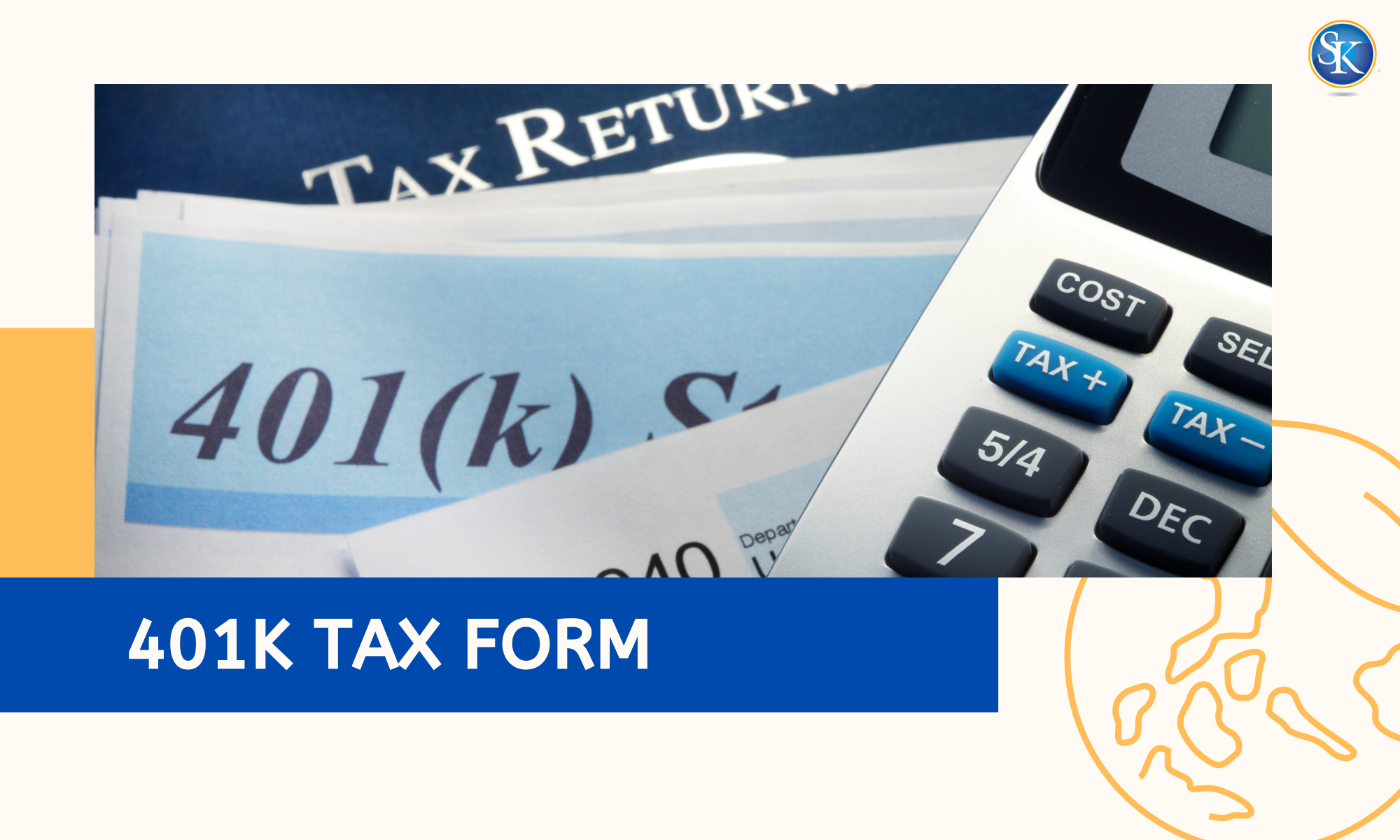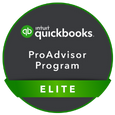
What is 401(k) tax form? Here's everything you need to know
Retirement planning can be complex, particularly when it comes to understanding how your 401k contributions are documented and processed through tax forms. The 401k tax form, an essential document in the management of 401k plans, serves as a communication bridge between the plan administrators and the IRS. In this extended blog, we will explore the 401k tax form in detail, discussing eligibility, contribution limits, benefits, and recent changes to the form.
What is a 401(k) Tax Form?
Formally known as IRS Form 5500, the 401k tax form is a mandatory report that provides the Internal Revenue Service with information about the 401k's financial status, operations, and compliance with government regulations. The form must be submitted annually by the plan administrator and is critical for ensuring the transparency and accountability of the retirement plan.
Importance of the 401k Tax Form
The submission of the 401k tax form is a federal requirement that helps safeguard the rights of employees by ensuring the plan's adherence to legal and financial standards. For employees, understanding the 401k tax form is beneficial for monitoring the plan's integrity and performance.
Detailed Sections of the 401k Tax Form
Here is a breakdown of the key sections within the 401k tax form:
|
Section |
Description |
|
Identifying Information |
Includes details such as plan name, sponsor, and administrator. |
|
Financial Information |
Reports the plan's assets, liabilities, income, and expenses. |
|
Participant Information |
Lists the number of active participants and beneficiaries. |
|
Compliance and Testing |
Ensures the plan meets specific standards and passes nondiscrimination tests. |
Understanding each section can provide participants with reassurance about their investments and the overall health of their retirement savings.
Eligibility Criteria for Participating in a 401k Plan
To be eligible for a 401k plan, employees typically need to meet certain criteria set by their employer, which might include a minimum age (often 21 years) and service requirements (such as having worked for the company for at least one year). However, these criteria can vary widely between employers.
Minimum Contributions for 401k Plans
While there is no legal minimum contribution required to participate in a 401k plan, employers may set a minimum amount for their company's plan to maintain its cost-effectiveness and administrative feasibility. Participants can choose to contribute a percentage of their salary, which might be as low as 1% or as high as the IRS maximum limit.
Benefits of Participating in a 401(k) Plan
401k plans offer several benefits, including:
Tax Advantages
One of the primary benefits of participating in a 401(k) plan is the substantial tax advantage it offers. Contributions to your 401k are made with pre-tax dollars, which means that the money is deducted from your salary before income taxes are applied. This reduces your taxable income, lowering your tax burden for the year. Additionally, the earnings on your investments accumulate tax-deferred, meaning you do not pay taxes on the gains until you withdraw the funds, typically during retirement when your tax rate may be lower. This tax deferment can significantly enhance the growth potential of your savings over time, making it an excellent strategy for long-term wealth accumulation.
Read more about the W2 form
Employer Match
Many employers offer to match the contributions you make to your 401k plan up to a certain percentage of your salary. This employer match can vary, but common formulas include matching 50% of employee contributions up to 6% of their salary, or 100% up to 3%. This is essentially free money, adding substantial value to your retirement savings and serving as a powerful incentive to contribute at least enough to capture the full match. Over the years, this additional contribution from your employer can compound, potentially increasing the size of your retirement fund significantly.
Compound Growth
The ability of earnings to compound on a tax-deferred basis is one of the most powerful aspects of a 401k plan. Since taxes on investment gains are not paid annually but deferred until the money is withdrawn, each year’s returns can generate their own earnings in subsequent years. This compounding effect accelerates the growth of your retirement savings, potentially resulting in a larger nest egg compared to taxable investment accounts, where earnings are taxed annually.
Loan and Withdrawal Options
401k plans also offer flexibility in terms of accessing your funds under certain conditions. While traditionally designed to serve as a retirement savings vehicle, most 401k plans allow you to borrow from your account for specific needs such as buying a home, paying for education, or covering medical expenses. These loans are typically required to be repaid over a period of up to five years with interest that you pay back into your account. Additionally, there are provisions for hardship withdrawals, which can provide financial relief in emergency situations. However, it's important to consider the long-term impacts of taking a loan or making a withdrawal, as these actions can reduce the benefit of compound growth and may incur taxes and penalties.
Recent Changes in the 401k Tax Form
In recent years, there have been several updates to the 401k tax form and related regulations, primarily aimed at improving transparency and simplifying the compliance process. These changes include revisions to the reporting requirements for small plans and updates to how information is submitted electronically to the IRS.
|
Year |
Change Description |
|
2019 |
Increase in Contribution Limits - The IRS raised the annual contribution limit for 401k plans from $18,500 to $19,000, allowing participants to save more on a tax-deferred basis. |
|
2020 |
CARES Act Provisions - In response to the COVID-19 pandemic, the CARES Act permitted affected plan participants to withdraw up to $100,000 without the usual 10% early withdrawal penalty and included provisions for increased loan limits and delayed loan repayments. |
|
2021 |
Further Increase in Contribution Limits - The contribution limits increased to $19,500. The catch-up contribution limit for those aged 50 and over rose to $6,500. |
|
2022 |
SECURE Act Implementation - The Setting Every Community Up for Retirement Enhancement (SECURE) Act included mandates for plans to cover long-term, part-time workers who work at least 500 hours per year for three consecutive years, and increased the required minimum distribution age from 72 to 73. |
|
2023 |
Adjustments for Inflation and SECURE 2.0 Act - Contribution limits adjusted for inflation to $20,500. The SECURE 2.0 Act, enacted late in 2022, introduced changes like further increasing the age for required minimum distributions, expanding automatic enrollment in retirement plans, and allowing matching contributions on student loan payments. |
|
2024 |
Increased Contribution Limits - The IRS has again adjusted the contribution limits for inflation, increasing the base limit to $22,500 and the catch-up contribution limit for those aged 50 and over to $7,500. This change allows participants to further leverage tax-deferred savings for retirement. |
Conclusion
Understanding the 401k tax form is crucial for both plan administrators and participants. It not only ensures compliance with federal laws but also provides participants with peace of mind about the security and performance of their retirement investments. By staying informed about your 401k plan's workings through the 401k tax form, you can make more informed decisions about your retirement strategy and ensure that your savings are growing effectively towards your future goals.
FAQs
What is a 401k plan?
A 401k plan is a tax-advantaged retirement savings plan offered by many employers to their employees. It allows workers to save and invest a portion of their paycheck before taxes are taken out. Contributions are typically made through payroll deductions, and the funds can be invested in a range of financial products, such as mutual funds.
How much can I contribute to my 401k each year?
For 2023, the contribution limit for employees who participate in 401k, 403b, most 457 plans, and the federal government's Thrift Savings Plan is $20,500. For 2024, this limit increases to $22,500. If you are age 50 or older, you can make additional catch-up contributions; for 2023, this amount is $7,500, and it remains the same for 2024.
What happens to my 401k when I change jobs?
When you change jobs, you have several options for managing your 401k: leave the funds in your former employer’s plan (if permitted), roll over the funds to your new employer’s plan (if one exists and rollovers are accepted), roll over the funds into an Individual Retirement Account (IRA), or cash out the account (which may result in penalties and taxes).
How do I withdraw from my 401k, and what are the penalties?
You can begin withdrawing from your 401k without penalty at age 59½. Early withdrawals are subject to a 10% penalty unless you qualify for an exception such as severe financial hardship, disability, or certain medical expenses. Withdrawals are taxed as ordinary income at your current tax rate.
What are the tax implications of investing in a 401k?
Contributions to a 401k reduce your taxable income since they are made pre-tax, which can lower your tax bill each year you contribute. The money grows tax-deferred, meaning you won’t pay taxes on the gains while they accumulate. However, you will pay regular income tax on the distributions you take in retirement.
Can I borrow from my 401k plan?
Many 401k plans allow loans, where you can borrow up to 50% of your vested account balance to a maximum of $50,000. Such loans must generally be repaid within five years with interest (the interest goes back into your account), but the specific terms can vary by plan. Failure to repay the loan can result in it being treated as a taxable distribution, subjecting it to taxes and possibly penalties.
Follow SKFinancial on Facebook / Twitter / Linkedin / Youtube for updates.








